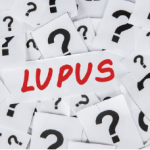Introduction & Objectives
Autoimmune disease is an emerging condition among persons exposed to the Sept. 11, 2001, attack on the World Trade Center (WTC) in New York. The collapse of the WTC towers after the attack resulted in the release of a cloud of dust and debris that covered parts of Lower Manhattan. Further exposure occurred through the resuspension of dust particles during recovery and clean-up activities.
Crystalline silica, a known risk factor for autoimmune diseases, was a major component of the dust cloud. Additional components of the dust cloud and the air at the site during the clean-up period have been previously associated with autoimmune diseases, including organic hydrocarbon solvents, fine particulate matter and asbestos.
In addition to the physical exposures, many people witnessed or experienced traumatic events on 9/11, as well as continued occupational or personal reminders of the attacks. Post-traumatic stress disorder (PTSD), one of the most common post-9/11 mental health disorders, has been associated with the subsequent onset of rheumatoid arthritis (RA) and other autoimmune disorders in both veteran and civilian populations. Studies conducted among New York City firefighters and emergency medical services personnel have identified an exposure-response relationship between length of time worked at the WTC site, level of exposure to the dust and debris following the attacks and systemic autoimmune disease.
Miller-Archie et al. set out to determine whether dust exposure and PTSD are associated with an increased risk of systemic autoimmune disease in a 9/11-exposed cohort not included in previous studies of members of the Fire Department of New York and whether this association differs between 9/11 responders and community members.
Methods
Among 43,133 WTC Health Registry enrollees, 2,786 self-reported having a post-9/11 systemic autoimmune disease. The researchers obtained informed consent to review medical records to validate systemic autoimmune disease diagnoses for 1,041 enrollees. Diagnoses of systemic autoimmune diseases were confirmed by classification criteria, rheumatologist diagnosis or having been prescribed systemic autoimmune disease medication. Controls were enrollees who denied having an autoimmune disease diagnosis (n=37,017). They used multivariable log-binomial regression to examine the association between multiple 9/11 exposures and risk of post-9/11 systemic autoimmune disease, stratifying by responders (rescue, recovery and clean-up workers) and community members (e.g., residents, area workers).
Results & Discussion
The researchers identified 118 people with systemic autoimmune disease. RA was most frequent (n=71), followed by Sjӧgren’s syndrome (n=22), systemic lupus erythematosus (SLE) (n=20), myositis (n=9), mixed connective tissue disease (n=7) and scleroderma (n=4).
Among 9/11 responders, those with intense dust cloud exposure had almost twice the risk of systemic autoimmune disease (adjusted risk ratio 1.86 [95% confidence interval 1.02–3.40]). Community members with PTSD had a nearly three-fold increased risk of systemic autoimmune disease.
Multivariable models revealed that women had a three to five times greater risk of systemic autoimmune disease than men. This result was consistent and significant in all models for both responders and community members.
Autoimmune disorders result from interactions between the environment, genetics and the immune system. Inhalation of dust containing crystalline silica, solvents, diesel exhaust, particulate air pollution and cigarette smoke have been hypothesized to induce systemic autoimmune diseases via inflammatory pathways, dysregulation of the immune response and increased peptide citrullination. Environmental risk factors have been associated with many epigenetic DNA methylation changes. Evidence from animal studies and other experimental research suggests that reduced methylation is present in immune cell types in people with SLE and in those with other autoimmune disease, including reduced methylation of the X chromosome, resulting in overexpression of genes specifically among women and increased susceptibility to these diseases. Differences in methylation patterns have also been associated with disease severity among people with SLE
Conclusion
Intense dust cloud exposure among responders and PTSD among community members were associated with a statistically significant increased risk of new-onset systemic autoimmune disease. Given that systemic autoimmune diseases are difficult to diagnose, it is not surprising that a pattern of increased risk by level of 9/11 exposure has emerged only in recent years. Clinicians treating 9/11 survivors should be aware of the potential increased risk of systemic autoimmune disease in this population.
This also demonstrates the need to monitor the health of populations affected by a disaster over the long term.
Refer to the full study for all source material.
Excerpted and adapted from:
Miller-Archie SA, Izmirly PM, Berman JR, et al. Systemic autoimmune disease among adults exposed to the September 11, 2001, terrorist attack. Arthritis Rheumatol. 2020 May;72(5):849–859.


